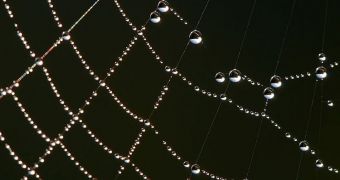A group of investigators at the Queensland University of Technology (QUT) announces the creation of a new technology for rendering contaminated water safe again. The approach is directed especially towards removing radioactive materials from waters contaminated during nuclear accidents.
This technology could be of great use for situations such as the one that started developing at the Fukushima Daiichi nuclear power plant, in Japan, earlier this year. Nuclear material from the damaged reactors flowed into the Pacific Ocean, affecting marine life and throwing the ecosystem off-balance.
According to the QUT group, the technique could help clear millions of tonnes of water at the same time, helping emergency responders cover large swaths of ocean surface at once. After applying the method, the end result is obtaining a batch of concentrated waste, which can then be stored away.
The absorbent the research group created is mostly based on titanate nanofiber and nanotube technology, and is advertised as the world's first intelligent system of this sort. The announcement was made by QUT Chemistry Department professor Huai-Yong Zhu.
This approach differs extensively from previously-used clean-up methods, such as zeolites and layered clays, mostly through the fact that it locks down radioactive materials with extreme efficiency. The absorbent does not let radioactive materials slip away even if it becomes wet.
“One gram of the nanofibres can effectively purify at least one tonne of polluted water. This saves large amounts of dangerous water needing to be stored somewhere and also prevents the risk of contaminated products leaking into the soil,” Zhu explains.
“Every year we hear of at least one nuclear accident. Not only is there a risk of contamination where human error is concerned, but there is also a risk from natural disasters such as what we saw in Japan this year,” the investigator goes on to say.
QUT experts developed the new approach together with colleagues at the Australian Nuclear Science and Technology Organization (ANSTO) and the Pennsylvania State University (Penn State), in the US.
“It is our view that just taking the radioactive material in the adsorbents isn't good enough. We should make it safe before disposing it. The same goes for Australian sites where we mine nuclear products. We need a solution before we have a problem, rather than looking for fixes when it could be too late,” Zhu explains.
“In France, 75 per cent of electricity is produced by nuclear power and in Belgium, which has a population of 10 million people there are six nuclear power stations. Even if we decide that nuclear energy is not the way we want to go, we will still need to clean-up what's been produced so far and store it safely,” he concludes.

 14 DAY TRIAL //
14 DAY TRIAL //